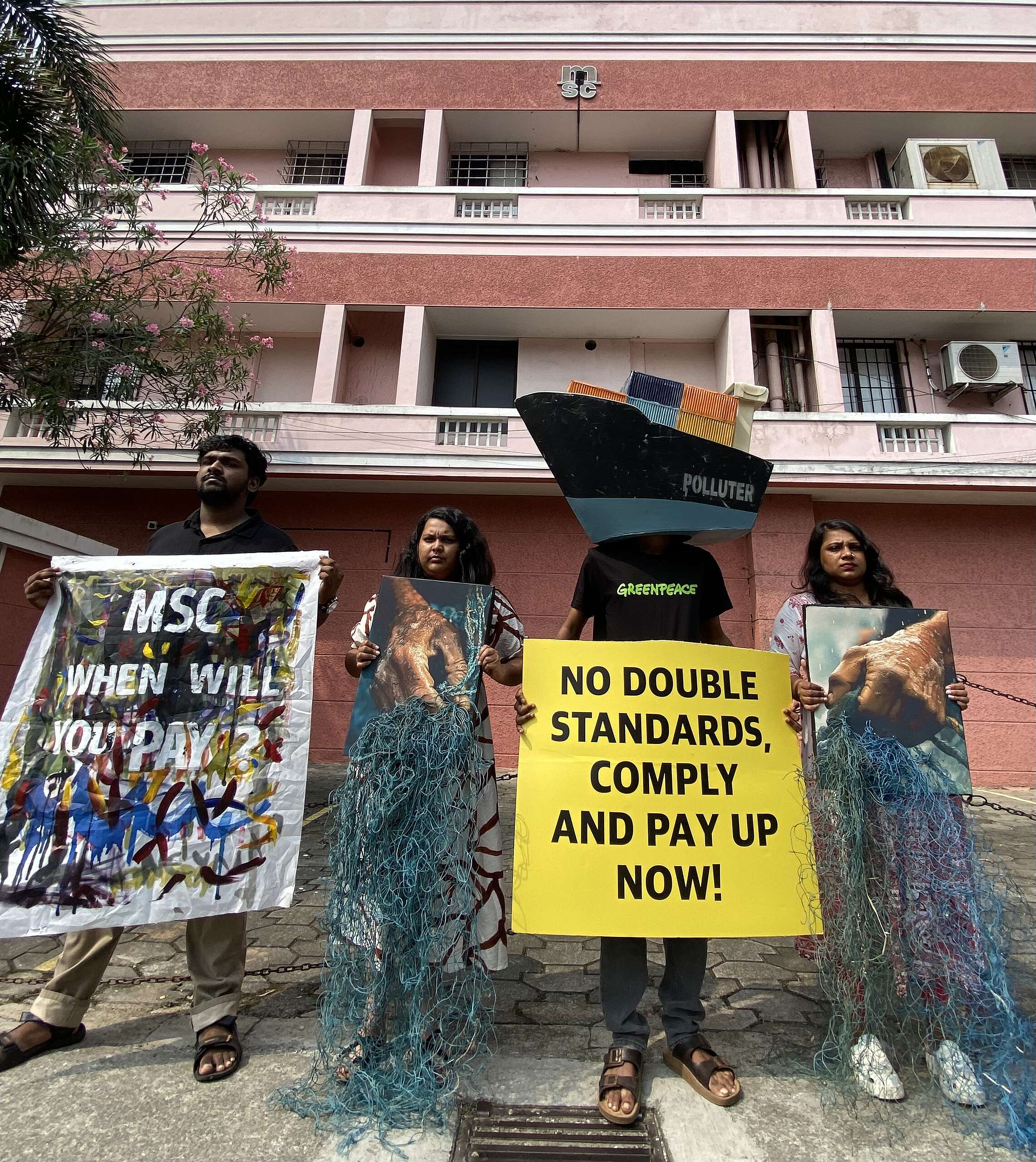Delhi’s streets are always alive and bustling, but when the summer sun hits, it can feel like a furnace. From the narrow lanes of Burari to the historic Meena Bazaar, market vendors face more than just customers. They battle the relentless outdoor heat every day, working long hours with little relief. No shade, no water, no rest. Just the scorching sun overhead and a constant reminder that the city is unforgiving.
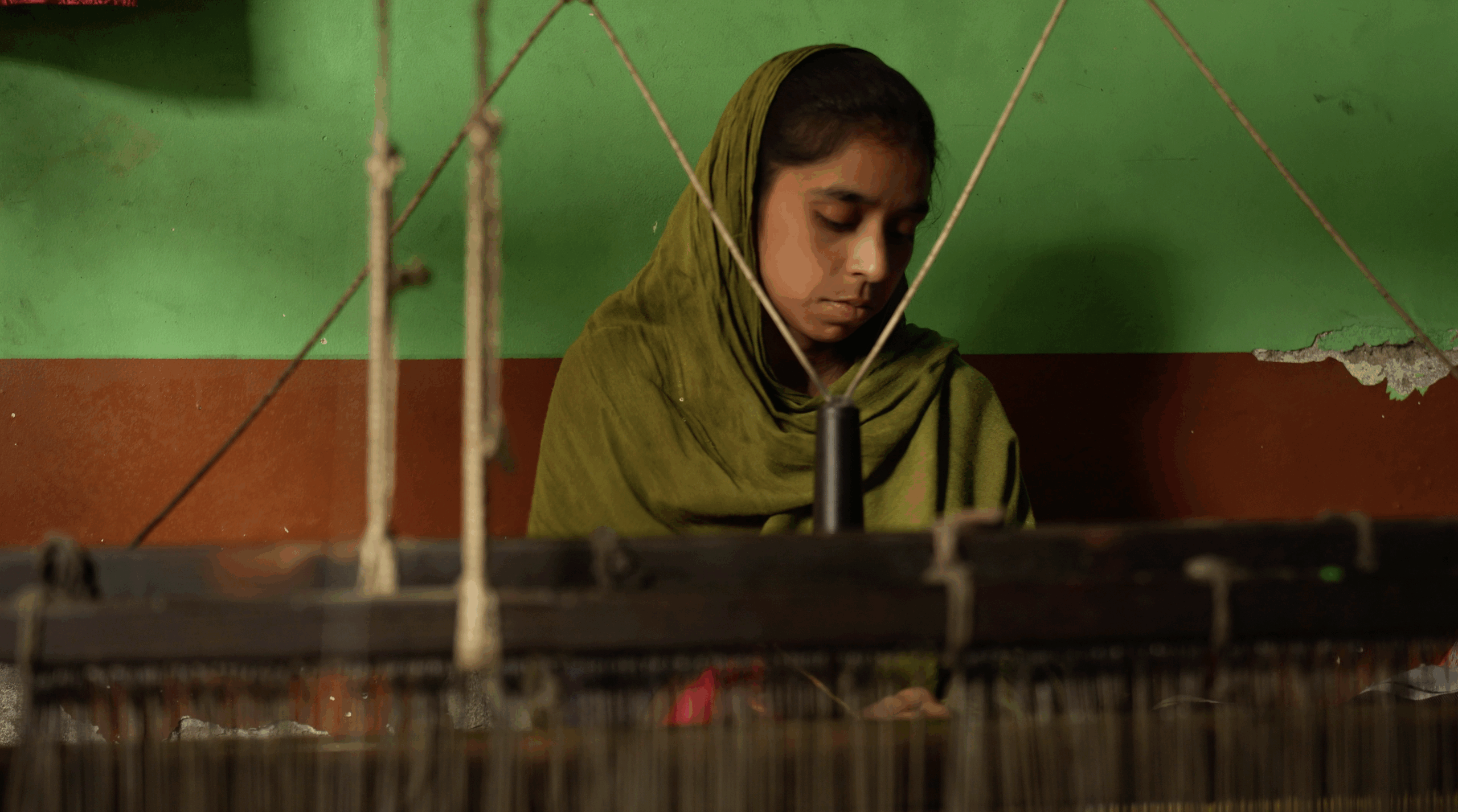
Keeping this reality in mind, we set out to meet the vendors, to understand their needs in the face of this heat crisis. Small conversations turned into action, and that’s how the market canopies came into being. It all started with a simple idea: Shade is a basic right.
The Struggle: Heat and Hardship
We’d been working on hydration points for workers across Delhi, but there was something missing. Sure, water was a necessity, but what about shade? Vendors stood at their carts all day, often without even a small umbrella to shield them from the heat. Their stalls? Barely a respite from the sweltering temperatures. A simple question emerged: How do we create a shaded space for them?
Initially, we thought of crowdsourcing used sarees—something people had lying around, an easy material to upcycle. The idea sounded promising. After all, a lot of our homes have old sarees tucked deep inside the cupboards. But as we soon learned, we’d have to go back to our thinking boards. The sarees we got were old and not strong enough to withstand the harsh Delhi weather.
The Shift: Sarees to Sustainable Fabric
Back to square one. We were determined, though. This wasn’t just about fabric—it was about providing relief, a small but significant barrier against the elements. That’s when we connected with Goonj, a social enterprise largely working on collecting essential pre-loved clothing to be redistributed with dignity.

Goonj introduced us to a community of weavers in Moradabad, a city known for its traditional weaving. Here, old woolen clothes are deconstructed into yarn and then woven into thick, colourful fabric. We visited the weavers, saw the process firsthand, and realized this was the solution we were looking for. The beauty of it? The fabric was durable, practical, and had was upcycled.
The Turnaround: When the Middle Class Showed Up
When word spread about the need for used knitwear, Residents’ Welfare Associations (RWAs) and individual citizens stepped forward in a wholesome manner. They came in, arms full of sweaters, and woollens from winter’s past.
It wasn’t just the volume—it was the solidarity that touched us.
For years, vendors and street hawkers have existed in a sort of uneasy coexistence with the ‘middle class’. Often treated as a nuisance, pushed to the margins, barely tolerated. But this moment was different. This time, donations weren’t just material—they were a quiet but powerful gesture of legitimacy. A recognition that these vendors belonged to the city. That their existence wasn’t just tolerated—it was valid, even essential.
It was, in this understated way, citizens said: “We are with you.”
From Concept to Canopies
With this fabric at hand, we worked with the Moradabad Community to stitch the material into long canopies. The fabric was durable, designed to withstand the elements, and—most importantly—it was something that could bring immediate relief to the vendors and workers.
The next question: But where would we put them?
The Canopies: One Market, Many Stories
We chose Burari and Meena Bazaar—two very different markets, both echoing the same need.
Burari, raw and local, where meat vendors told us that afternoon customers were rare—the sun too punishing. Meena Bazaar, nestled between the iconic Lal Qila and Jama Masjid, where tradition runs deep and shade had long been a luxury.
The installations began quietly. But the moment the canopies went up, something shifted.
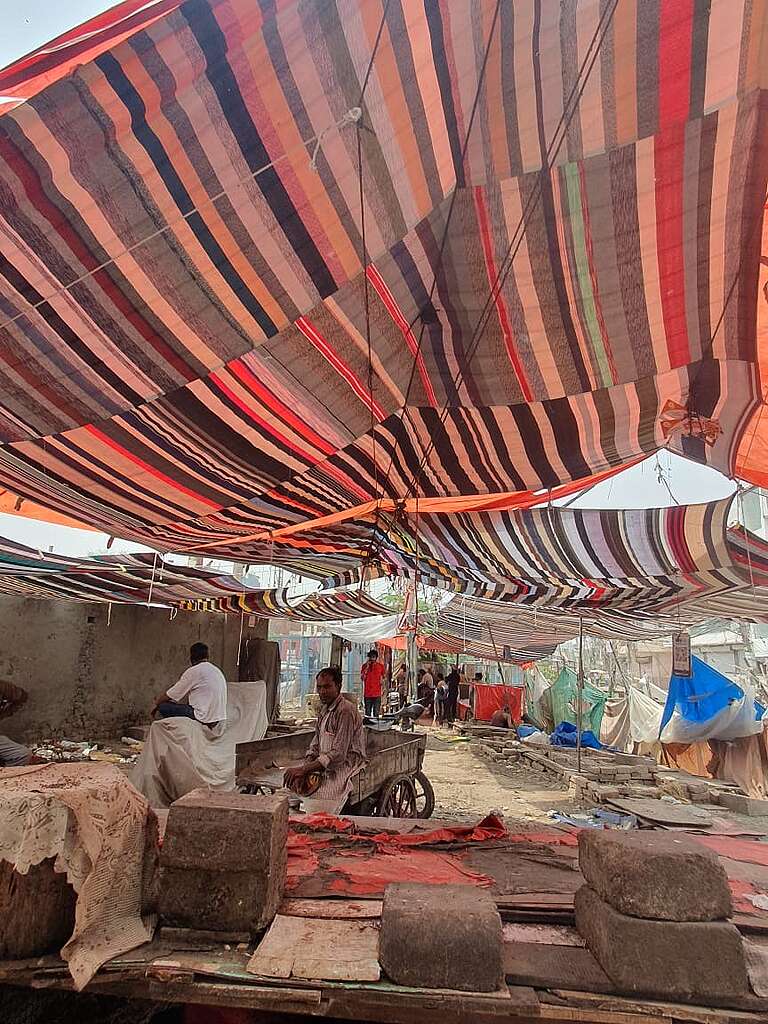
In Burari, vendors stood under the fabric and sighed—actually sighed—in relief. “It’s cooler,” they said. “More people are stopping by.”In Meena Bazaar, the response was even more energetic. Vendors who had once hesitated began helping—lifting poles, tying ropes, adjusting fabric, making it theirs. The canopies weren’t just being installed for them; they were being built with them.
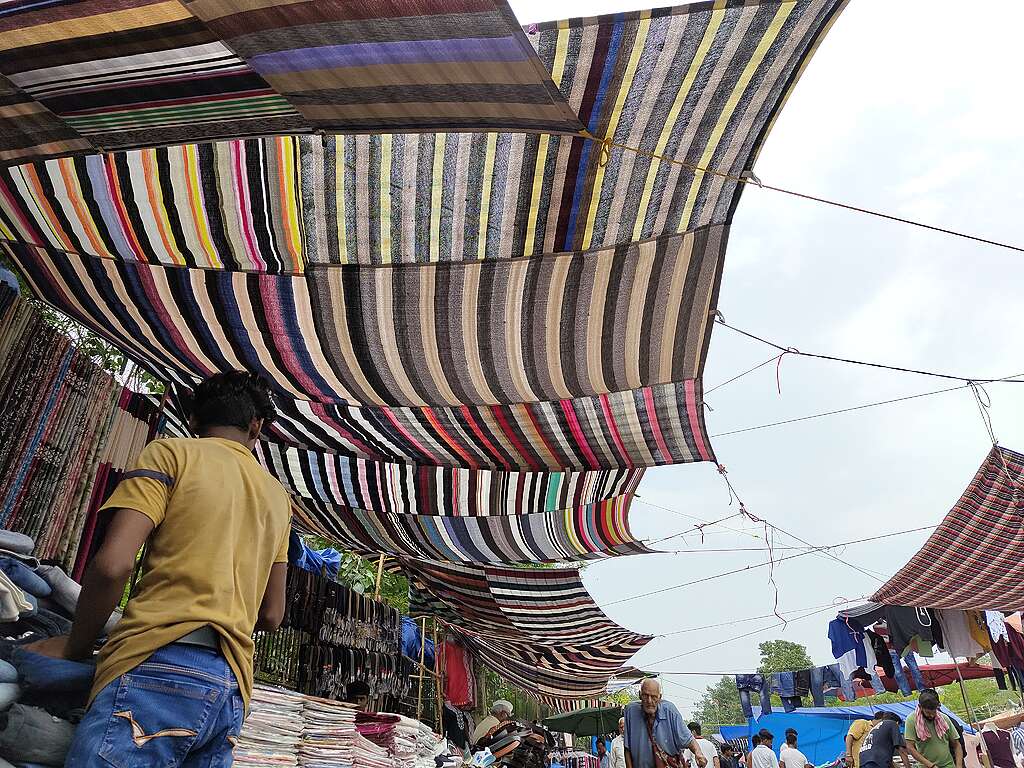
The shade changed the atmosphere. Not just the temperature, but the energy. People lingered longer. And the vendors? For once, they weren’t just surviving—they were being supported.
The Larger Impact: More Than Just Shade
While the canopies were a physical solution to the heat, the real change was the shift in the vendor morale. In a city like Delhi, where people often struggle to be seen or heard, these canopies were more than just a shade—they were a symbol. A small, yet powerful act of solidarity that reminded these workers that they mattered.
And it didn’t stop there. What began as a project to provide shade evolved into something more. These canopies, like the hydration stations, became a rallying point for workers’ rights. They were a tangible example of how small, community-led interventions could make a huge difference.
From Moradabad’s weavers to Burari’s meat market and Meena Bazaar’s vendors, these simple canopies served as a visual reminder that resilience isn’t always loud—it can be quiet, steady, and woven into the fabric of everyday life.
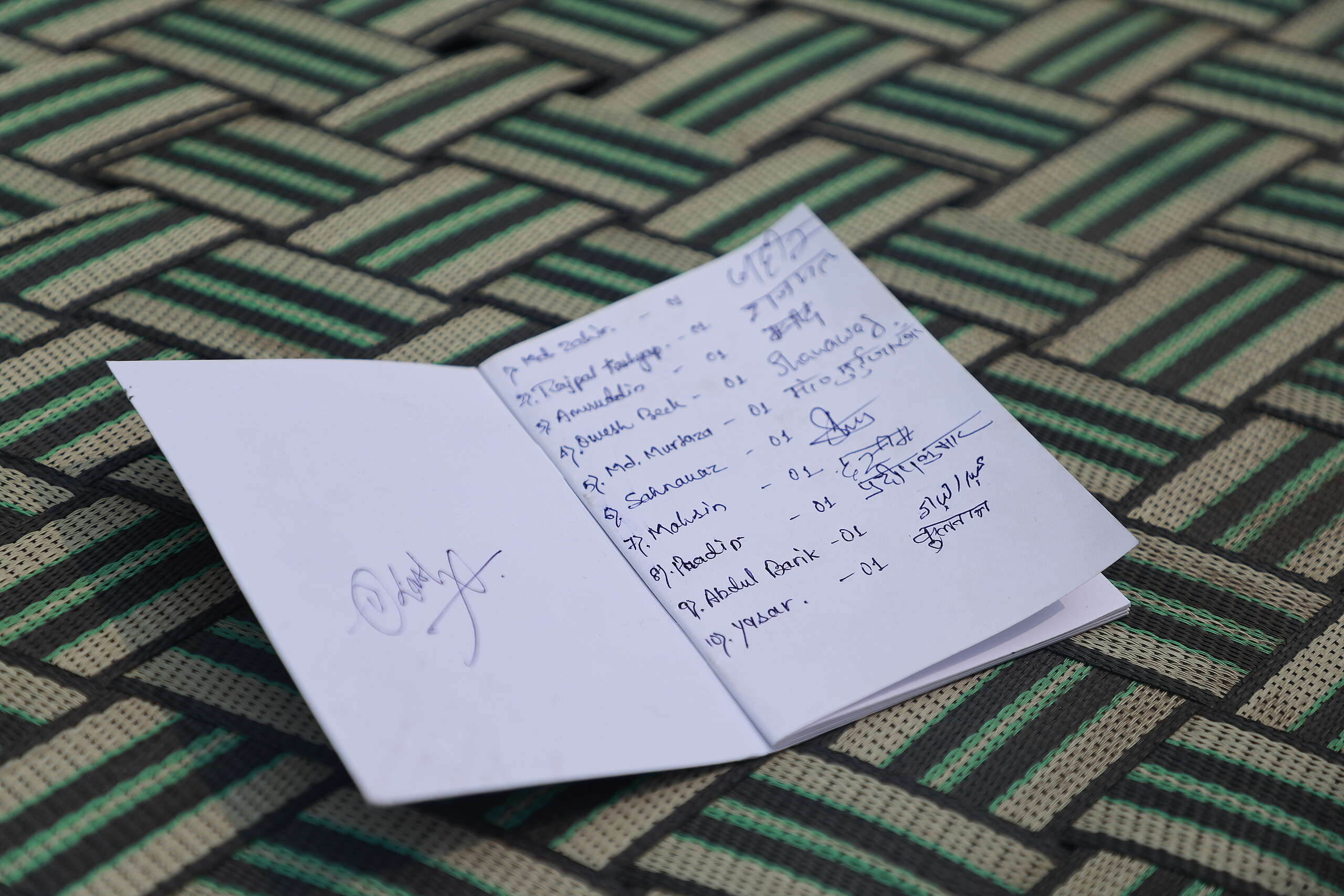
And who knows? The next time you pass by a market stall in Delhi, you might notice the difference—a canopy overhead, a cool breeze, and a sense of relief that didn’t just come from the weather, but from the community’s unwavering determination to make life just a little bit easier for everyone.
Shade, after all, is more than just protection from the sun. It’s a gesture of care, and a reminder that change is possible when we work together.


